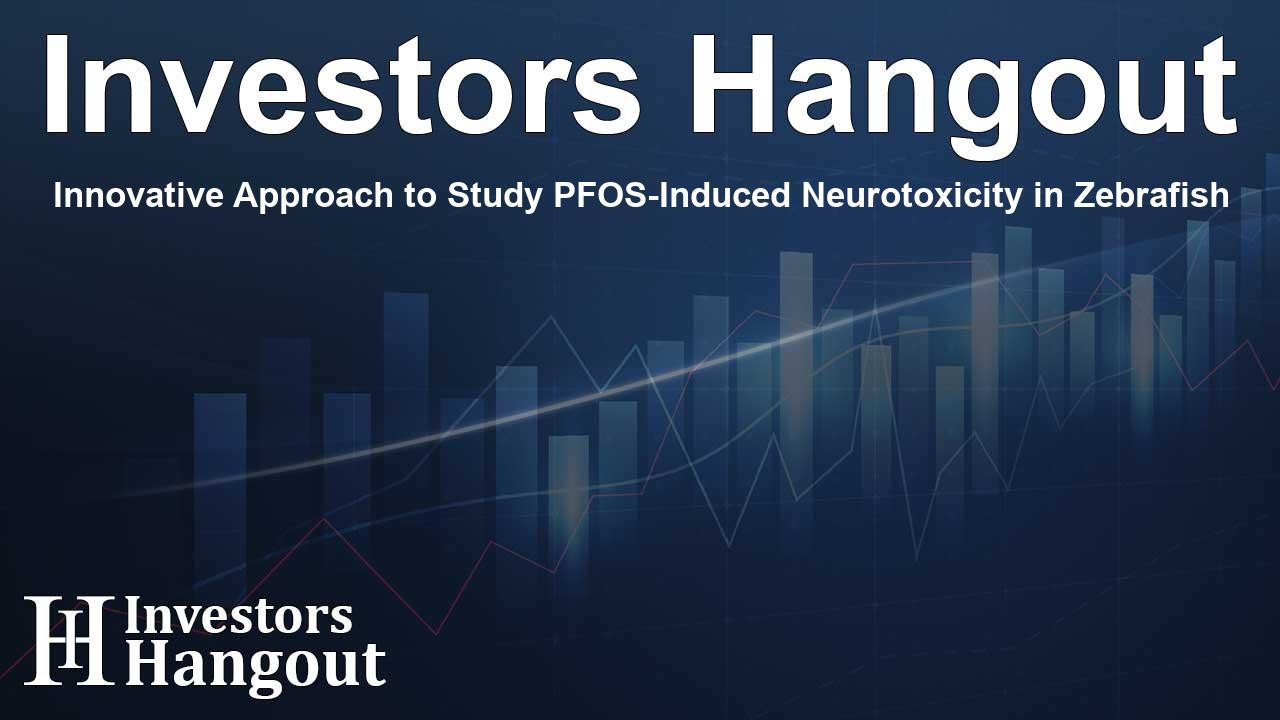Innovative Approach to Study PFOS-Induced Neurotoxicity in Zebrafish

New Strategies in Understanding PFOS Neurotoxicity
Researchers at Seoul National University of Science and Technology (SEOULTECH) are making significant strides in understanding the neurotoxicity of perfluorooctanesulfonate (PFOS). PFOS is a prevalent environmental pollutant found in aquatic ecosystems, noted for its harmful impacts on both animals and humans. The research team, under the guidance of Professor Ki-Tae Kim, has introduced an innovative method that allows for the simultaneous extraction of lipids and metabolites from zebrafish embryos, facilitating a more comprehensive study of neurotoxicity.
The Role of Omics in Environmental Toxicology
The term 'omics' encompasses a collection of scientific disciplines that analyze various biomolecules in biological samples. These include transcriptomics, proteomics, metabolomics, and lipidomics, each contributing to our understanding of molecular interactions and pathways. Traditional toxicology approaches often rely on single-omics studies, which create gaps in our comprehension of complex toxicity mechanisms. By incorporating multi-omics analyses, the SEOULTECH team seeks to fill these gaps, particularly in zebrafish, which have proven to be a valuable model in toxicological research.
Challenges in Current Toxicology Studies
While advancements have been made in omics technologies, many studies still depend on individually prepared biological samples. This approach can lead to variations that obscure results. One of the primary obstacles faced by researchers has been selecting appropriate extraction solvents for effective analysis. The SEOULTECH team's method addresses these limitations, enhancing the reliability of their findings.
Advancement in Extraction Techniques
The novel extraction method proposed by Professor Kim utilizes a methyl tert-butyl ether (MTBE)-based strategy, which allows for the analysis of both metabolomics and lipidomics from a single sample of zebrafish embryos. This innovative technique has been shown to reduce inter-sample variation significantly, with the team identifying 30 larvae as the optimal sample size for consistent results across analyses.
Profound Implications for Understanding Toxicity
In their pioneering study, the researchers not only analyzed the metabolomics and lipidomics profiles of zebrafish exposed to PFOS but also explored the resulting neurobehavioral changes. Prof. Kim explains that their analyses uncover how disruptions in biochemistry, particularly in amino acids and fatty acids, can influence energy metabolism, ultimately affecting laboratory behavior. These insights offer a glimpse into the complex relationship between environmental pollutants and biological responses.
Unveiling Biomolecular Mechanisms
One of the most notable outcomes of this research has been the identification of sphingolipids as reliable biomarkers for PFOS-induced neurotoxicity. This finding enhances understanding of the mechanisms through which PFOS affects zebrafish and potentially other organisms. The implications extend beyond academic knowledge, suggesting pathways for addressing the health impacts associated with environmental exposures.
Future Directions and Applications
This multi-omics approach not only paves the way for assessing toxicity at the biomolecular level but has broader applications in environmental health studies. By understanding the interactions and pathways involved in toxicity, researchers can drive the development of safer environmental practices and regulations aimed at reducing human and ecological harm.
Conclusion
The work emerging from SEOULTECH represents a transformative effort to understand how environmental pollutants affect living organisms. With a focus on innovative methods, the researchers’ findings have the potential to impact both scientific understanding and public health policies, ultimately leading to a safer environment for all. As the field of environmental toxicology evolves, so too does the need for holistic studies that address the complexity of biological responses to pollutants.
Frequently Asked Questions
What is PFOS and why is it significant in toxicology?
PFOS, or perfluorooctanesulfonate, is a persistent environmental pollutant that poses risks to aquatic ecosystems and human health due to its widespread contamination and potential neurotoxic effects.
How does the new extraction method differ from traditional approaches?
The new MTBE-based extraction method allows for simultaneous analysis of metabolites and lipids from a single sample, as opposed to traditional methods which often require separate preparations, leading to better comparability of results.
Why are zebrafish used as a model for studying neurotoxicity?
Zebrafish are used because they share genetic similarities with humans, have transparent embryos, and allow for observations of physiological changes, making them an ideal model for studying the effects of pollutants on development and behavior.
What are the implications of identifying sphingolipids as biomarkers?
Identifying sphingolipids as biomarkers helps researchers understand specific biochemical changes associated with PFOS exposure, guiding further studies and potential remediation strategies in toxicology.
How could this research impact environmental policies?
This research could inform public health approaches and environmental regulations, promoting better management of pollutants to protect ecosystems and human health.
About The Author
Contact Caleb Price privately here. Or send an email with ATTN: Caleb Price as the subject to contact@investorshangout.com.
About Investors Hangout
Investors Hangout is a leading online stock forum for financial discussion and learning, offering a wide range of free tools and resources. It draws in traders of all levels, who exchange market knowledge, investigate trading tactics, and keep an eye on industry developments in real time. Featuring financial articles, stock message boards, quotes, charts, company profiles, and live news updates. Through cooperative learning and a wealth of informational resources, it helps users from novices creating their first portfolios to experts honing their techniques. Join Investors Hangout today: https://investorshangout.com/
The content of this article is based on factual, publicly available information and does not represent legal, financial, or investment advice. Investors Hangout does not offer financial advice, and the author is not a licensed financial advisor. Consult a qualified advisor before making any financial or investment decisions based on this article. This article should not be considered advice to purchase, sell, or hold any securities or other investments. If any of the material provided here is inaccurate, please contact us for corrections.
